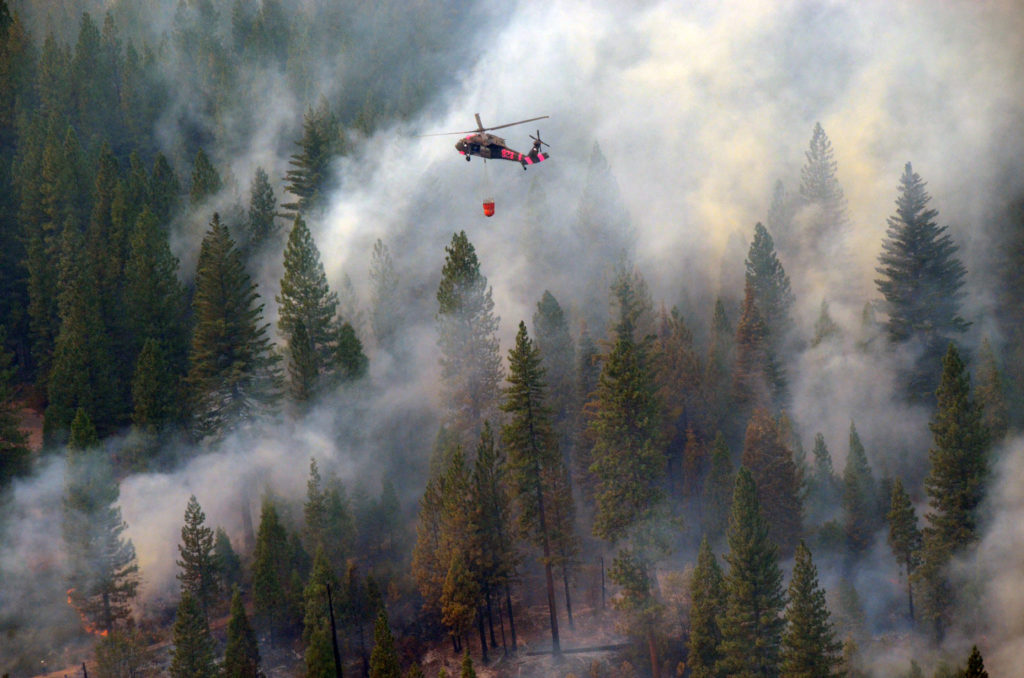Climate change is a global issue, but ultimately has local impacts. Outlined below are some of the unique challenges that the Capital Region will face as climate impacts increase.
Climate Impacts in the Capital Region
Increased Flood Risks

More Extreme Weather
Projected increase in extremes of wet and dry seasons will mean stronger, more sudden storms.
Higher-volume runoff
Warmer winters will lead to more precipitation falling as rain instead of snow, and accelerated melting of the Sierra snowpack each year.
Greater vulnerability
Land subsidence combined with sea-level rise could increase the amount of land vulnerable to 100-year flood events and weaken levees.
Reduced Water Supply
Decreased rainfall
Climate change could increase the frequency, length, and intensity of drought periods in California.
Shrinking snowpack
The Sierra Nevada snowpack is a critical year-round reservoir, but has been declining over the past 50 years due to warmer, drier winters, reaching a record 5 percent of its normal volume in April 2015.
Summer shortage
Earlier melting of the Sierra Nevada snowpack decreases water availability in critical summer periods and deteriorates water quality.
A thirstier world
Warmer temperatures will increase water demand across our urban and natural systems.

Increased Wildfires

Faster, stronger, fiercer
Decreased precipitation, warmer temperatures, and decades of fire suppression have turned our forests into a tinderbox, leading to larger, fiercer, and faster wildfires.
Unhealthy forests
Drought, as well as insects and pests, which thrive in warmer environments, are already severely deteriorating tree health, increasing fire risks
Widespread consequences
Wildfires result in enormous amounts of hazardous air pollutants as well as greenhouse gas emissions, damage watersheds and habitats, increase landslide risks, and threaten vital energy infrastructure such as transmission lines and natural gas pipelines.
Public Health Impacts
Faster, stronger, fiercer
Decreased precipitation, warmer temperatures, and decades of fire suppression have turned our forests into a tinderbox, leading to larger, fiercer, and faster wildfires.
Unhealthy forests
Drought, as well as insects and pests, which thrive in warmer environments, are already severely deteriorating tree health, increasing fire risks
Widespread consequences
Wildfires result in enormous amounts of hazardous air pollutants as well as greenhouse gas emissions, damage watersheds and habitats, increase landslide risks, and threaten vital energy infrastructure such as transmission lines and natural gas pipelines.

Critical Infrastructure Impacts

Heat stress
Extreme heat can add additional stress to California’s aging infrastructure, threatening passenger safety and negatively impacting regional and interstate trade and goods transport.
Power outages and inefficiencies
Increased air conditioning use during hotter summers will increase electricity demand, but at the same time extreme heat will also decrease generator and power line efficiencies, while hydroelectricity may decrease due to reduced water supply.
Greater capital costs
Heat and lack of nighttime cooling may decrease lifespan for critical grid infrastructure and other equipment.
Endangered Natural Systems and Biodiversity
Nature at risk
Changes in temperature, precipitation, growing season, and water availability associated with climate change will have a profound impact on the Capital Region’s forests, meadows, wetlands, and mountains, as well as their plant and animal species.
Humans lose too
Natural systems provide key benefits such as fresh drinking water through riparian zones, clean air from forests, grazing for livestock, and recreational and aesthetic values, all of which are likely to be negatively affected by climate change impacts.

Greater Risk to Agriculture and Our Economy

Decreased agricultural productivity
The Capital Region is known for its agricultural bounty, but rising temperatures, reduced water availability, warmer winters, changing precipitation patterns, and the proliferation of pests can all deteriorate the productivity and quality of the region’s agricultural sector.
Dry winters, empty slopes
Warmer, drier winters are already hurting the northern California ski and snowboard industry, which accounts for $1.2 billion in economic activity each year.
Cascading effects
Greater risks to health care, infrastructure, agriculture, and other services will likely increase costs for all sectors of the economy.
Business resilience is community resilience
Small businesses will be especially vulnerable to the risks of climate change.
Looking upstream
In this globalized economy, changes elsewhere in resource availability, extreme weather, transport, and other factors could disrupt upstream supply chains and costs. Regionally, drought will impact enterprises that use water or local agricultural inputs in their production processes.
